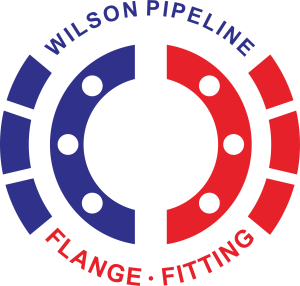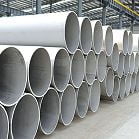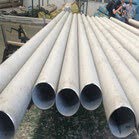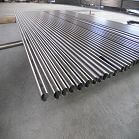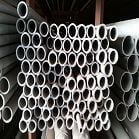Products on sale
Hot Sale Haynes 188 Monel Nickel Alloy Pipe/Tube
描述
Hastelloy® metals and alloys are known for their superior ability to withstand high temperatures and corrosion. Haynes International first developed this type of super alloys after the invention of stainless steel in 1913.
Hastelloy® alloys offer incredible strength and ductility under stress, as well as good formability. Hastelloy® alloys are resistant to corrosive chemicals and acids, such as hydrochloric acid, which sets them apart from other alloys. In addition, a metallurgist can make a superalloy so that it is resistant to oxidizing agents.
Corrosion-resistant Hastelloy® alloys
Hastelloy® B-3® Alloy
The Hastelloy® B-3® alloy (UNS N10675) exhibits extremely high resistance to pure hydrochloric acid, hydrogen bromide and sulfuric acid. Furthermore, it has greatly improved structural stability compared to previous B-type alloys, leading to fewer problems during welding, fabrication and maintenance.
Like other nickel alloys (in the annealed state), it is ductile, can be formed and welded, and resists stress corrosion cracking in chloride-containing solutions. Also, it can withstand fluoride-bearing media and concentrated sulfuric acid, both of which result in damage to zirconium alloys.
It is used in numerous applications of the chemical process industry, especially in the construction of reaction vessels for pure, reducing acid service.
Hastelloy® C-22® Alloy
Hastelloy® C-22® alloy (UNS N06022) is one of the well-known and proven nickel-chromium-molybdenum materials, whose key properties include resistance to both oxidizing and non-oxidizing chemicals, and protection against pitting, crevice attack and stress corrosion cracking.
The high chromium content offers much higher resistance to oxidizing media than the standard C-276 alloy, and provides exceptional resistance to chloride-induced pitting, an insidious and unpredictable form of attack to which stainless steel is susceptible.
Like other nickel alloys, Hastelloy® C-22® alloy is highly ductile, exhibits excellent weldability, and is readily fabricated into industrial components.
It is available in the form of plates, sheets, strips, billets, bars, wires, pipes, tubes and clad electrodes.
Typical applications in the chemical process industry include reactors, heat exchangers and columns.
Hastelloy® C-276 Alloy
Hastelloy® C-276 alloy (UNS N10276) was the first forged, nickel-chromium molybdenum material to address concerns about welding (based on its extremely low carbon, silicon).
As such, it became widely accepted in the chemical process industry and related industries, and it has long track records of proven performance in a wide range of corrosive chemicals.
Like other nickel alloys, it is ductile, easily formed and welded, and possesses exceptional resistance to stress corrosion cracking in chloride-containing solutions (a form of degradation to which austenitic stainless steels are susceptible).
With its high chromium and molybdenum content, it is resistant to both oxidizing and non-oxidizing acids, and exhibits excellent resistance to pitting and crevice attack in the presence of chlorides and other halides.
Furthermore, it is highly resistant to sulfide stress cracking and stress corrosion cracking and cracking in acidic, oilfield environments. Hastelloy® C-276 alloy is available in the form of plates, sheets, strips, billets, bars, wires, pipes, tubes and clad electrodes.
Typical chemical process industry applications include reactors, heat exchangers, and columns.
Standard Composition of Hastelloy® C-276
Ni
57.00% Balance
Cr
16.00%
Mo
16.00%
Fe
5.00%
W
4.00%
Mn
1.00% max
Cu
0.5% max
V
0.35% max
Si
0.08% max
C
0.01% max
Welding and fabrication of Hastelloy® C-276
Hastelloy® C-276 alloy is highly amenable to the Gas Metal Arc (GMA/MIG), Gas Tungsten Arc (GTA/TIG), and Shielded Metal Arc (SMA/Stick) welding processes. Fitting filler metals (i.e., solid wires and clad electrodes) are available for these processes.
Hastelloy® C-2000® alloy
Hastelloy® C-2000® alloy (UNS N06200) is unique among versatile nickel-chromium-molybdenum materials due to the deliberate addition of copper. This provides greatly enhanced resistance to sulfuric acid. It also has a high chromium content, for maximum resistance to oxidizing chemicals and process streams contaminated with iron ions and dissolved oxygen.
Like other nickel alloys, it is ductile, easily formed and welded, and possesses exceptional resistance to stress corrosion cracking in chloride-containing solutions (a form of degradation to which austenitic stainless steels are susceptible). It is resistant to a wide range of oxidizing and non-oxidizing chemicals, and exhibits excellent resistance to pitting and crevice attack in the presence of chlorides and other halides.
Typical applications in the chemical process industry are reactors and heat exchangers.
Hastelloy® G-30® alloy
Hastelloy® G-30® alloy (UNS # N06030) is a nickel-chromium-iron material that is highly resistant to “wet process” phosphoric acid (P2 O5), one of the most important industrial chemicals, being the primary source of phosphorus for agricultural fertilizers.
The G-30® alloy is also moderately resistant to chloride-induced localized attack, which can be a problem under deposits in evaporators used to remove P2 O5. In addition, G-30® is less susceptible to chloride-induced stress corrosion cracking than stainless steels. steels. As a result of its high chromium content, G-30® alloy is also highly resistant to other oxidizing acids, such as nitric acid and mixtures containing nitric acid. It possesses moderate resistance to reducing acids, such as hydrochloric and sulfuric acids, due to its significant molybdenum and copper content.
Hastelloy® G-30® alloy is available in the form of plates, sheets, strips, billets, bars, wires, pipes, tubes and clad electrodes.
Applications include P2 O5 evaporator tubes and nitric acid-based, metal stain-based hardware.
Inconel® Alloys
Inconel® is a registered trademark of Special Metals Corporation for a family of austenitic nickel-chromium-based superalloys.
Inconel® alloys are one of the most versatile metals available. Thanks to their high performance and superior properties, they are used in a wide range of industries.
They are a natural choice in the automotive, aerospace, marine, oil and gas industries because they are specifically optimized to withstand some of the most demanding manufacturing conditions.
Types of Inconel® alloys
Although the composition of Inconel® alloys varies widely, they all consist of nickel and chromium as primary elements. These special metals are not to be confused with duplex stainless steel, austenitic stainless steel or any other type of stainless steel alloy. Below is a quick overview of the different types of Inconel® alloys.
Inconel® 600
This nickel-chromium alloy is highly resistant to a wide range of corrosive elements. It does not succumb to general oxidation or stress corrosion corrosion by chloride ions, even at extreme temperatures.
Inconel® 601
Inconel® 601 contains nickel, chromium and aluminum. The addition of aluminum gives it exceptional mechanical properties even in high temperature environments.
Inconel® 625
Inconel® 625 contains nickel, chromium, molybdenum and niobium. The reaction between molybdenum and niobium hardens the alloy’s matrix microstructure, increasing its overall tensile strength. It is what makes this nickel-based alloy highly resistant to the corrosive elements found in harsh environments.
Other well known names for Inconel® 625 are Haynes 625, Nickelvac 625, Nicrofer 6020, Altemp 625 and Chronic 625.
Inconel® 625 key properties
Ni
58.00% min
Cr
20.00-23.00%
Mo
8.00-10.00%
Fe
5.00% max
Nb+Ta
3.15-4.15%
Co
1.00% max
Si
0.50% max
Mn
0.50% max
Ti
0.40% max
Ag
0.40% max
C
0.10% max
S
0.01% max
P
0.01% max
| Property | 21 °C | 204 °C | 316 °C | 427 °C | 538 °C | 649 °C | 760 °C | 871 °C |
| Ultimate Tensile Strength /Mpa | 992.9 | 923.9 | 910.1 | 910.1 | 896.3 | 820.5 | 537.8 | 275.8 |
| 0.2% Yield Strength /MPa | 579.2 | 455.1 | 434.4 | 420.6 | 420.6 | 413.7 | 406.8 | 268.9 |
| Elongation % | 44 | 45 | 42.5 | 45 | 48 | 34 | 59 | 117 |
| Coefficient of Thermal Expansion µm/m⁰C | – | 13.1 | 13.3 | 13.7 | 14 | 14.8 | 15.3 | 15.8 |
| Thermal Conductivity /kcal/(hr.m.°C) | 8.5 | 10.7 | 12.2 | 13.5 | 15 | 16.4 | 17.9 | 19.6 |
| Modulus of Elasticity/ MPa | 2.07 | 1.93 | 1.93 | 1.86 | 1.79 | 1.65 | 1.59 | – |
Inconel® 625 specifications
- UNS number: N06625
- Werkstoff number: 2.4856
- Standards: ASTM B443, B444, B446, B704, B705, B366, B751, B775, B829, AMS 5599, 5666, 5837, 5879, 5869, 5581 UNS N06625, Werkstoff 2.4856
Welding consumables
- Welding electrodes: Inconel 112
- Fillers: Inconel filler metal 625
Incoloy 82
Inconel® 690
Unlike other metal alloys of the family, Inconel® 690 is made of high chromium and nickel. The use of high chromium makes this particular variant of the metal alloy highly resistant to the corrosive conditions synonymous with aqueous environments. Its high corrosion resistance also makes it resistant to the sulfidation that occurs in high-temperature environments.
Inconel® 718
The structure and reaction of Inconel® 718 are very different from the other metals in the family. This nickel-based superalloy consists of nickel and chromium, in addition to significant amounts of molybdenum, niobium and iron. It also contains traces of aluminum and titanium. The combination of these alloying elements makes Inconel® 718 very strong, flexible and resistant to cracking after welding.
Monel® Alloys
Monel® was created in 1905 by Robert Crooks Stanley, who was then employed by the International Nickel Company (Inco). Monel® alloy 400 is a binary alloy of the same ratio of nickel to copper as occurs naturally in the meteoritic nickel ore from the Sudbury (Ontario) mines and is therefore considered a puritanical alloy. Monel® was named for the company’s president, Ambrose Monell, and patented in 1906. One L was omitted because family names were not allowed as trademarks at that time. The trademark was registered in May 1921, and the name is now a trademark of Special Metals Corporation.
Monel® is a group of alloys of nickel (from 52 to 67%) and copper, with small amounts of iron, manganese, carbon and silicon. Monel® is not a copper-nickel alloy because it contains less than 60% copper.
Stronger than pure nickel, Monel® alloys are resistant to corrosion by many aggressive substances, including fast-flowing seawater. They can be easily fabricated by hot and cold working, machining and welding.
Types of Monel® alloys
There are several commercial types of Monel® such as Alloy 400, Alloy R-405, Alloy K-500. Standard product shapes are round, hexagonal, flat, forging, pipe, tube, plate, sheet, strip and wire.
Monel® 400
Monel® nickel-copper alloy 400 (UNS N04400/W.No. 2.4360 and 2.4361) is a solid-solution alloy that can only be hardened by cold forming. It has high strength and toughness over a wide temperature range and excellent resistance to many corrosive environments.
Alloy 400 is used in many fields, especially marine and chemical processing. Typical applications include valves and pumps; pump and propeller shafts; marine fasteners and fasteners; electrical and electronic components; springs; chemical processing equipment gasoline and fresh water tanks; process vessels and piping; boiler feedwater heaters and other heat exchangers; and venting devices.
Standard Composition of Monel® 400
Ni+Co
63.00% min
Mo
28.00-34.00%
Fe
2.50% max
Mn
2.00% max
Si
0.50% max
C
0.30% max
S
0.024% max
Properties of Nickel-Copper Alloy Monel® 400
| Property | Value (Metric) | Value (Imperial) |
| Density | 8.80*103 kg/m3 | 549 lb/ft3 |
| Modulus of Elasticity | 179 GPa | 26,000 ksi |
| Thermal Expansion (20°C) | 13.9*10-6° C-1 | 7.7*10-6 in/(in*°F) |
| Specific Heat Capacity | 427 J/(kg*K) | 0.102 BTU/(lb*°F) |
| Thermal Conductivity | 21.8 W/(m*K) | 151 BTU*in/(hr*ft2*°F) |
| Electric Resistivity | 54.7*10-8 Ohm*m | 54.7*10-6 Ohm*cm |
| Tensile Strength (Annealed) | 550 MPa | 79,800 psi |
| Yield Strength (Annealed) | 240 MPa | 34,800 psi |
| Elongation | 48% | 48% |
| Liquid temperature | 1,350° C | 2,460° F |
| Solidus Temperature | 1,300° C | 2,370° F |
Monel® R405
Monel® nickel-copper alloy R405 (UNS N04405) is the free-machining grade of alloy 400. Its higher sulfur content increases machinability. It has essentially the same corrosion resistance and physical properties as alloy 400, but a slightly different set of mechanical properties. Alloy R405 is primarily used for automatic screw machine stock and is generally not recommended for other applications.
Monel® K500
Monel® alloy K500 (UNS N05500/W.No. 2.4375) is a nickel-copper alloy that combines the excellent corrosion resistance of Monel® alloy 400 with the added benefits of greater strength and hardness. The improved properties are obtained by adding aluminum and titanium to the nickel-copper base and by heating under controlled conditions so that submicroscopic particles of Ni3 (Ti, Al) precipitate throughout the matrix. The thermal process used to achieve precipitation is commonly referred to as aging or aging.
Typical applications for Monel® alloy K500 products are chains and cables, fasteners and springs for marine; pump and valve parts for chemical processing; doctor blades and scrapers for pulp processing in paper production; drill columns and drill collars and instruments, pump passes and impellers, non-magnetic housings, safety elevators and valves for oil and gas extraction; and and gas production; and sensors and other electronic components.
